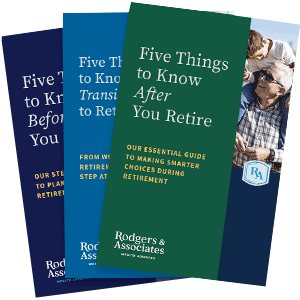Throughout 2024, I’ve fielded a lot of questions about what might happen to tax laws in 2025. While we can’t be certain what might change, we do know that some legislation passed in previous years will begin to take effect in January. Here are five ways to start planning for a tax-efficient new year.
Still working? Boost your retirement savings.
For those who are still working, the 401(k) contribution limit is increasing in 2025 to $23,500 for those under age 50. Those age 50 or older can make catch-up contributions of $7,500.
SECURE 2.0 allows some individuals aged 60–63 to make even bigger catch-up contributions to their retirement plans. This may apply to your 401(k), 403(b), and governmental 457(b) plan, but it’s important to note that this change is optional for employers. Each plan sponsor will decide whether to implement this feature in their retirement plans. The increased catch-up contribution limit is $10,000 or 150% of the standard age 50+ catch-up contribution limit, whichever is greater.
For example, the standard catch-up limit for those age 50+ in 2025 is $7,500. 150% of this standard limit gives us $11,250—the enhanced catch-up contribution limit for ages 60–63.
To qualify for the enhanced catch-up contributions, you must meet specific criteria:
- You must be age 60, 61, 62, or 63 by the end of the calendar year.
- Generally, you must have already made the maximum contribution to your employer-sponsored plan.
Maximize your giving with qualified charitable donations (QCDs)
Individual retirement account (IRA) owners age 70½ or over can transfer up to $108,000 to charity each year tax-free. For those that are charitably inclined, this is an opportunity to lower taxable income and reduce the amount of future required minimum distributions (RMD’s) in a tax-free manner.
For those who have already begun taking RMDs, a QCD counts toward the IRA owner’s RMD for the year. Ask your adviser how to do this if you are interested.
Plan for gift and estate taxes.
The IRS recently announced increases in gift and estate tax exemptions for 2025. The annual gift exclusion will increase to $19,000 for calendar year 2025, up $1,000 from 2024. Since this is an individual limit, married couples can double this amount to $38,000 per recipient. Estates of decedents who die during 2025 can exclude $13,990,000 for federal estate tax purposes—an increase from $13,610,000 in 2024.
Talk with your adviser about major expenses.
This one may not seem as obvious, but it can have an impact on your tax situation. If you have large upcoming expenses, let your adviser know as soon as possible. Discussing how much you’ll need (and when) will allow your adviser to plan a tax-efficient strategy for the coming year.
Consider a year-end Roth conversion.
Once your adviser has a good understanding of what your taxable income will be for the year, they can make determine if a Roth conversion is right for your situation. Roth conversions can help you manage your tax bracket and possibly reduce future required minimum distributions. They can also lead to a portfolio that is more diversified from a tax perspective, which can help you control your taxable income during retirement.



